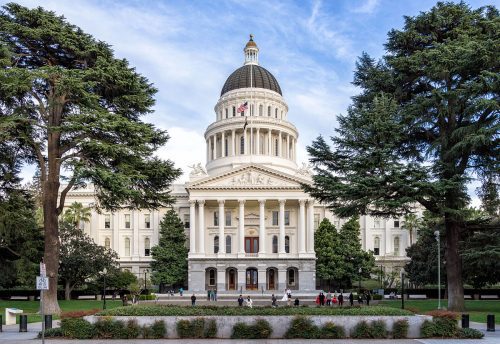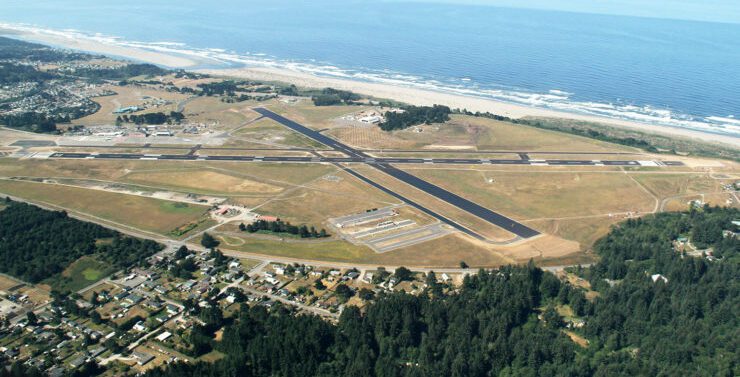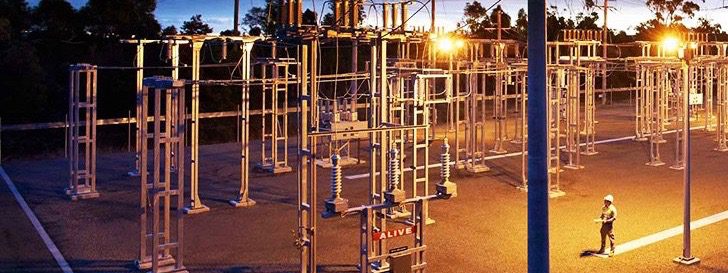
Foundational policy progress in 2020
Despite pandemic slowdowns, the Clean Coalition conducted significant policy work this year that sets the stage for big wins in 2021.
While the pace of energy policy innovation slowed with the onset of COVID-19, the Clean Coalition still made critical progress in 2020. In addition to other activities, we submitted over 30 regulatory filings at the state, local, and federal levels. In more than one case, including in the “Microgrids proceeding” at the California Public Utilities Commission (CPUC), our foundational work in 2020 has set the stage for crucial policy successes in 2021.
Reducing barriers to microgrids
In 2020 the CPUC began a proceeding to implement SB 1339, which has the goal of facilitating the commercialization of microgrids in California – an essential step toward eliminating the barriers to the widespread deployment of Solar Microgrids and Community Microgrids.
In the first track of the proceeding, the Clean Coalition supported proposals that were approved by the Commission to allow oversized behind-the-meter (BTM) batteries and temporary grid charging for resilience purposes; we also supported a requirement for single-line diagrams to streamline the interconnection process for microgrids, especially those at critical community facilities. As part of Track 1, the Clean Coalition wrote a support letter promoting the Pacific Gas & Electric (PG&E) Community Microgrid Enablement Program (CMEP), a program in which the utility will act as a partner for communities to develop Community Microgrids up to 20 megawatts (MW) in size that provide resilience for multiple facilities, including at least one critical community facility. The program was developed based on the design and ongoing negotiations for the Redwood Coast Airport Microgrid (RCAM), which is staging to be the first true Community Microgrid in California.

In the second track of the proceeding, the Clean Coalition argued that Solar Microgrids, especially when aggregations of distributed energy resources (DER) are used, can aggregate to provide clean backup power across substation grid areas in PG&E’s service territory, reducing the need for de-electrification during Public Safety Power Shutoffs (PSPS). A Proposed Decision was released on 7 December, with a comment period ending on 1 January 2021. The Commission will issue a final Decision later that month.
In preparation for Track 3, the Clean Coalition signed on to a motion urging the Commission to focus the rest of the proceeding on creating a hybrid microgrid tariff that would include a definition for the value-of-resilience, prepare the grid for the deployment of Community Microgrids by defining the grid services that Solar Microgrids can provide, and determine the different ways energy can be utilized, such as being sold in different markets. Thus far, the motion has not been ruled on by the Administrative Law Judge, but the subject has become the focus of the Resiliency and Microgrid Working Group.
While the microgrids proceeding has been disappointing so far due to the conservative approach taken by the CPUC, the Clean Coalition will continue working hard to ensure that California has a path to commercialize all types of renewables-driven microgrids.
Correctly valuing the avoided transmission costs of DER
The Clean Coalition’s opening and reply comments on the 2020 update of the Avoided Cost Calculator (ACC), a key tool used by the CPUC to calculate the value of DER, were instrumental to some important policy advancements. The update added the value of avoidable future transmission capital costs that are associated with load growth as part of the ACC valuation of DER.
This valuation improves the case for investments in non-wires alternatives (NWAs) such as DER generally and when configured into Solar Microgrids and Community Microgrids, in lieu of costly new transmission infrastructure. The ruling also extended this avoided transmission valuation to all three of California’s investor-owned utility (IOU) service territories; previously, the valuation had been included only for PG&E. While further ACC improvements are still needed, especially for calculating the full avoided cost of transmission that DER provide, the 2020 update represented an important step forward.
Important to note is that the ACC only accounts for future capital expenditures associated with new transmission infrastructure. All existing transmission costs, including operations and maintenance (O&M) costs that are many times larger than the upfront capital expenditures, are assessed via Transmission Access Charges (TAC), which are erroneously applied to DER in California’s IOU service territories. This causes a massive market distortion that charges DER for the use of the transmission grid, even though the energy from DER almost always only uses the distribution grid. This market distortion artificially inflates the cost of DER by multiple cents/kWh. In 2020, the Clean Coalition continued leading the TAC Campaign to fix this massive market distortion, and we are pleased to have a rapidly growing list of allies. We made major strides in increasing awareness and understanding of the issue at the CPUC and the California legislature, and we continue working to introduce TAC reform legislation in California.

Protecting net energy metering
In June, the Clean Coalition joined other parties in successfully arguing at the Federal Energy Regulatory Commission (FERC) for the rights of states to control and regulate energy within the distribution grid. In a move that could have hastened the end of net energy metering (NEM), the New England Ratepayers Association (NERA) petitioned to transfer the authority to regulate all energy beyond the customer’s meter from state governments to the federal government – which would have forced all NEM compensation rates to comply with the Public Utility Regulatory Policies Act (PURPA). This would have been a huge loss for all DER, and the Clean Coalition found itself on the same side as the CPUC, other Public Utility Commissions, numerous nonprofits, and lawmakers in successfully beating back the unwarranted NERA petition.
Using DER to defer distribution infrastructure upgrades
In October, the Clean Coalition provided comments in support of a DER deferral tariff that will become an integral part of the Distribution Planning Process and the Distribution Deferral Opportunity Report. For the first time, a process is being created to exclusively use DER – in both front-of-meter (FOM) and BTM configurations – to defer upgrades to the distribution grid.
The two incentive programs, the Clean Energy Customer Incentive and the Standard Offer Contract, will allow aggregations of smaller, less costly projects to gradually meet distribution needs over time rather than requiring one single project to meet these needs. DER deferral projects will have the ability to value stack with other state programs like NEM and the Self-Generation Incentive Program (SGIP) while leveraging private capital, allowing them to provide additional grid services such as reliability and frequency regulation when energy is not reserved by the distribution system operator (DSO). Prior to the deferral tariff, the existing framework did allow for DER to be selected as deferral projects, but not a single BTM project had ever been chosen.

Additional policy work
In 2020 the Clean Coalition also made progress on a number of other policy areas, including the following:
- Streamlining interconnection. The September final decision in the CPUC’s Rule 21 Working Groups 2 and 3 incorporated interconnection streamlining innovations we argued for, such as the inclusion of standardized upfront fees, updated Integration Capacity Analysis (ICA) values, and removal of all size limits in the fast track eligibility process. In Working Group 4, we proposed that the IOUs include single-line diagrams for zero net energy facilities (ZNE) on their websites; this will be considered by the CPUC in early 2021.
- The Renewable Market Adjusting Tariff (ReMAT). The Clean Coalition has been involved since the beginning of ReMAT and had originally offered a robust Feet-In Tariff (FIT) proposal that would have actually been effective – as opposed to ReMAT, which was designed with numerous embedded landmines. Nonetheless, the deficient ReMAT program is still the only statewide FIT in California, and the Clean Coalition was instrumental in pressing the CPUC to reopen the program after it was halted in 2017. In 2020 we supported a CPUC decision to resume ReMAT but noted that Market Responsive Pricing – like in the state-of-the-art FIT we designed for the City of San Diego – should have been adopted rather than the administratively set prices that were implemented.
- The Clean Truck Rule. We submitted comments to the California Air Resources Board (CARB) noting that the new rule is essential for limiting the excessive emissions from the transportation sector. Initial pressure resulted in CARB increasing the requirement for the percentage of trucks to be electrified by 2030 from 4% to 30%; the Clean Coalition believes that our continued pressure will help lead to an even more stringent rule in the next round of the Clean Truck Rule.
We look forward to some big policy innovations in 2021, building on our crucial groundwork this year.

